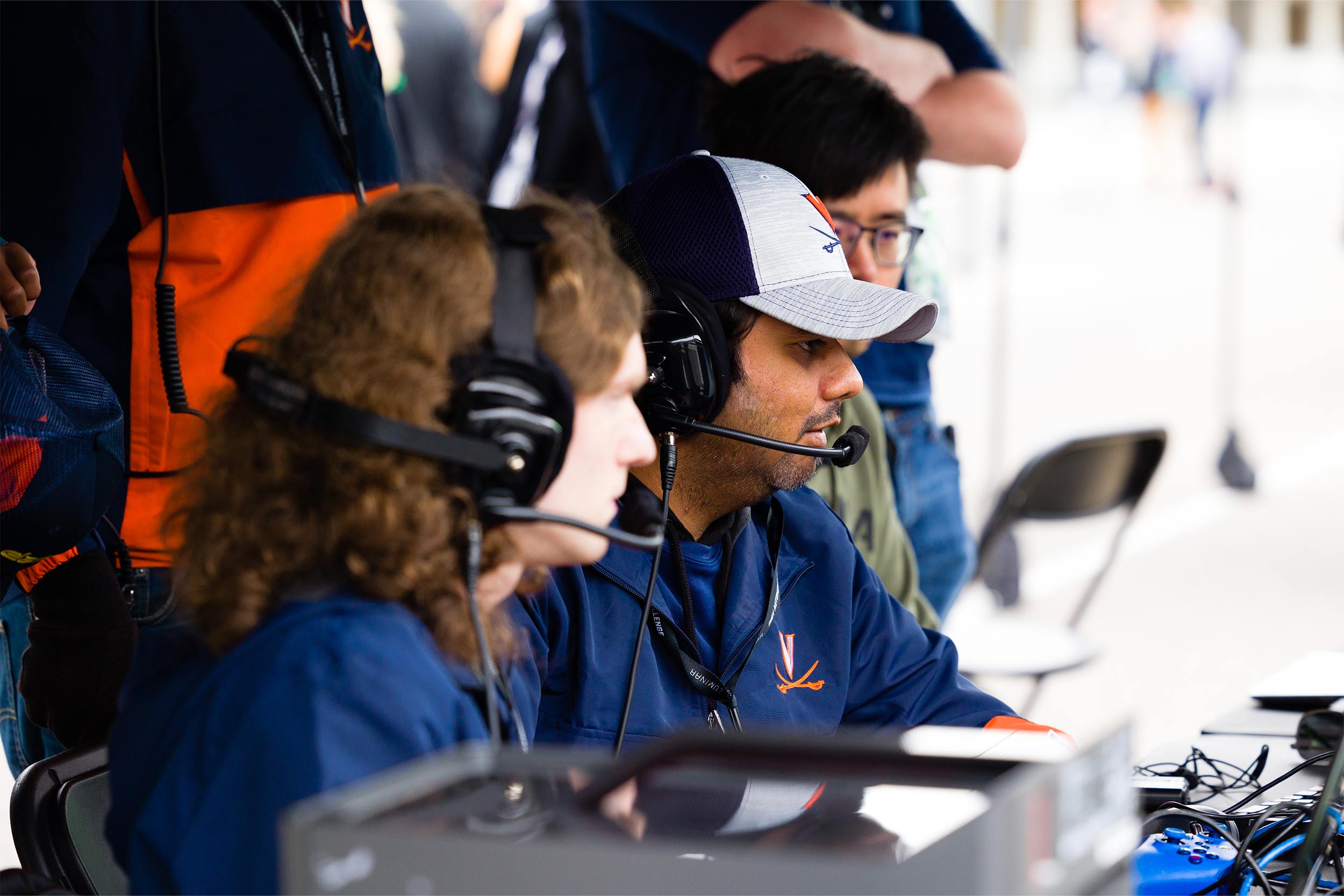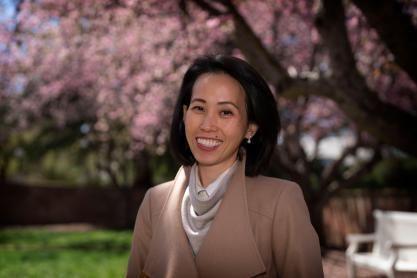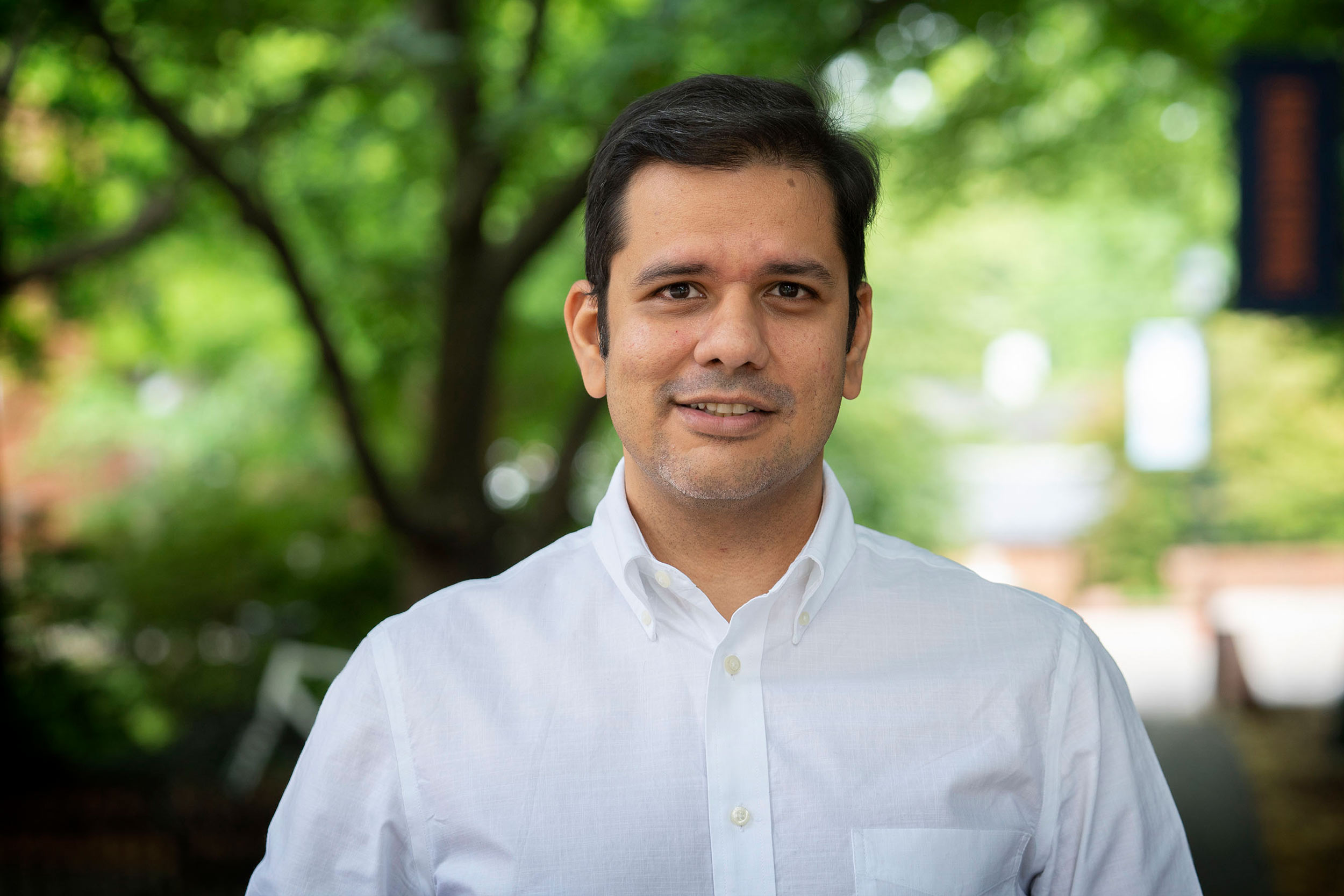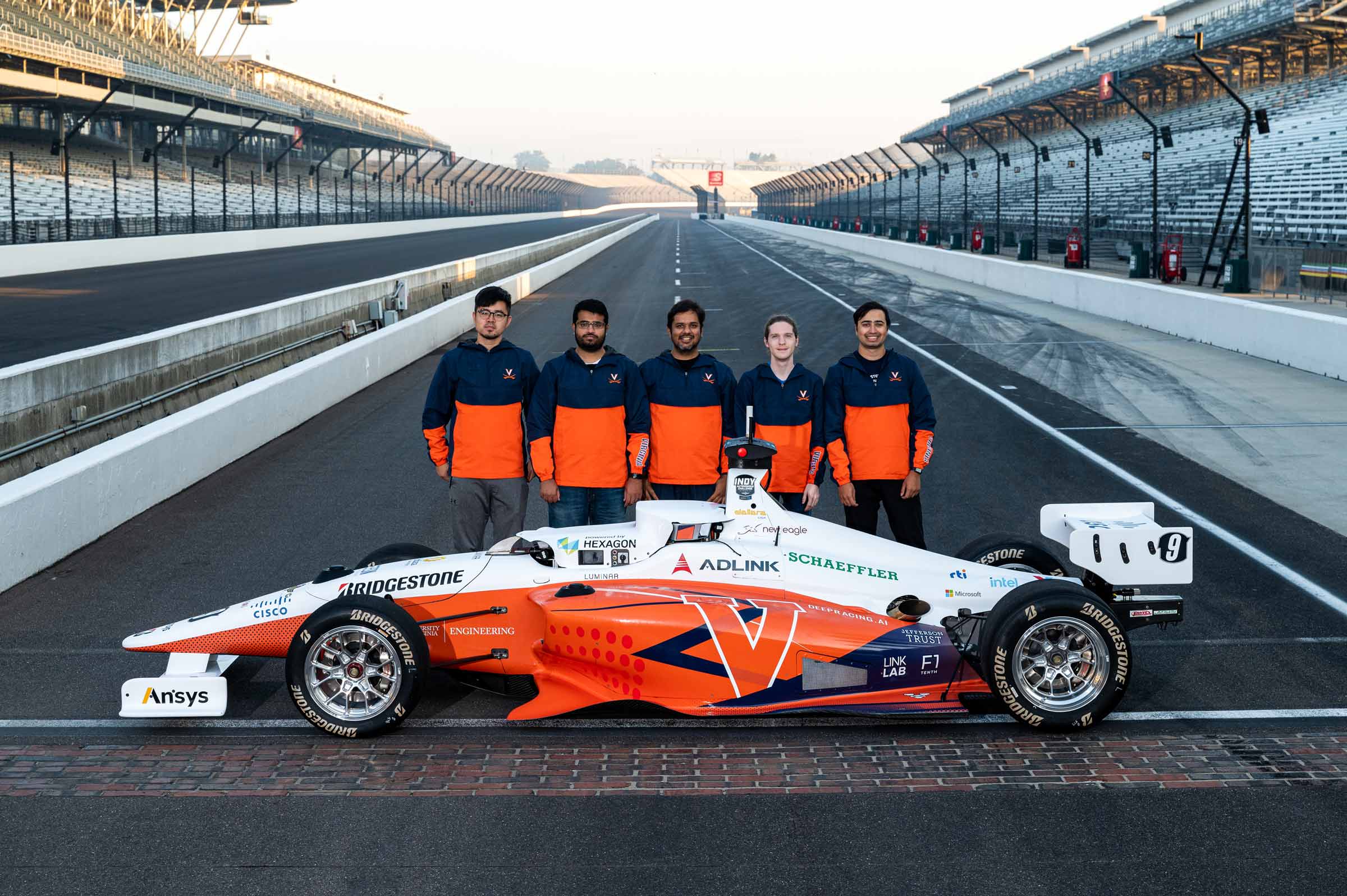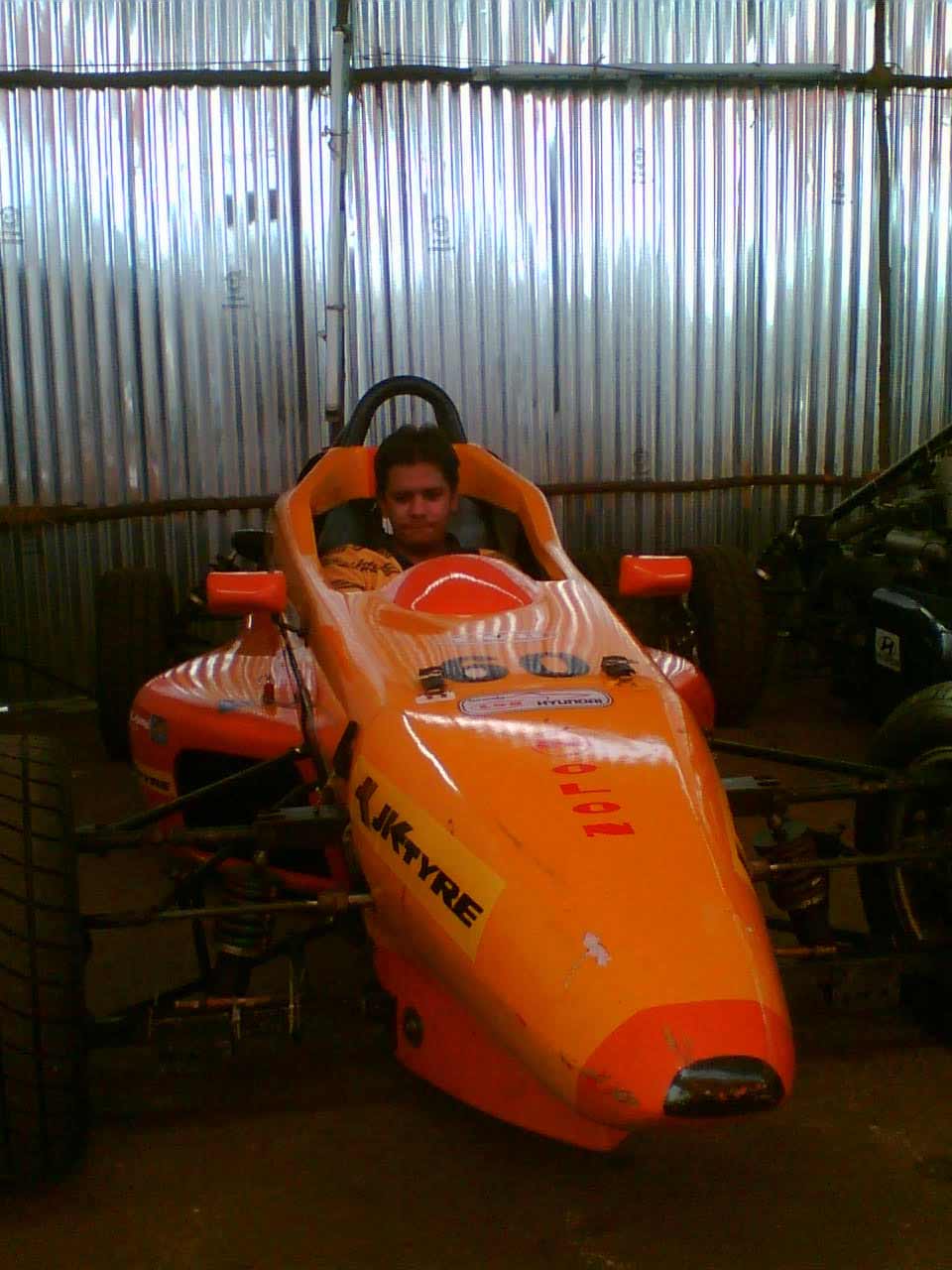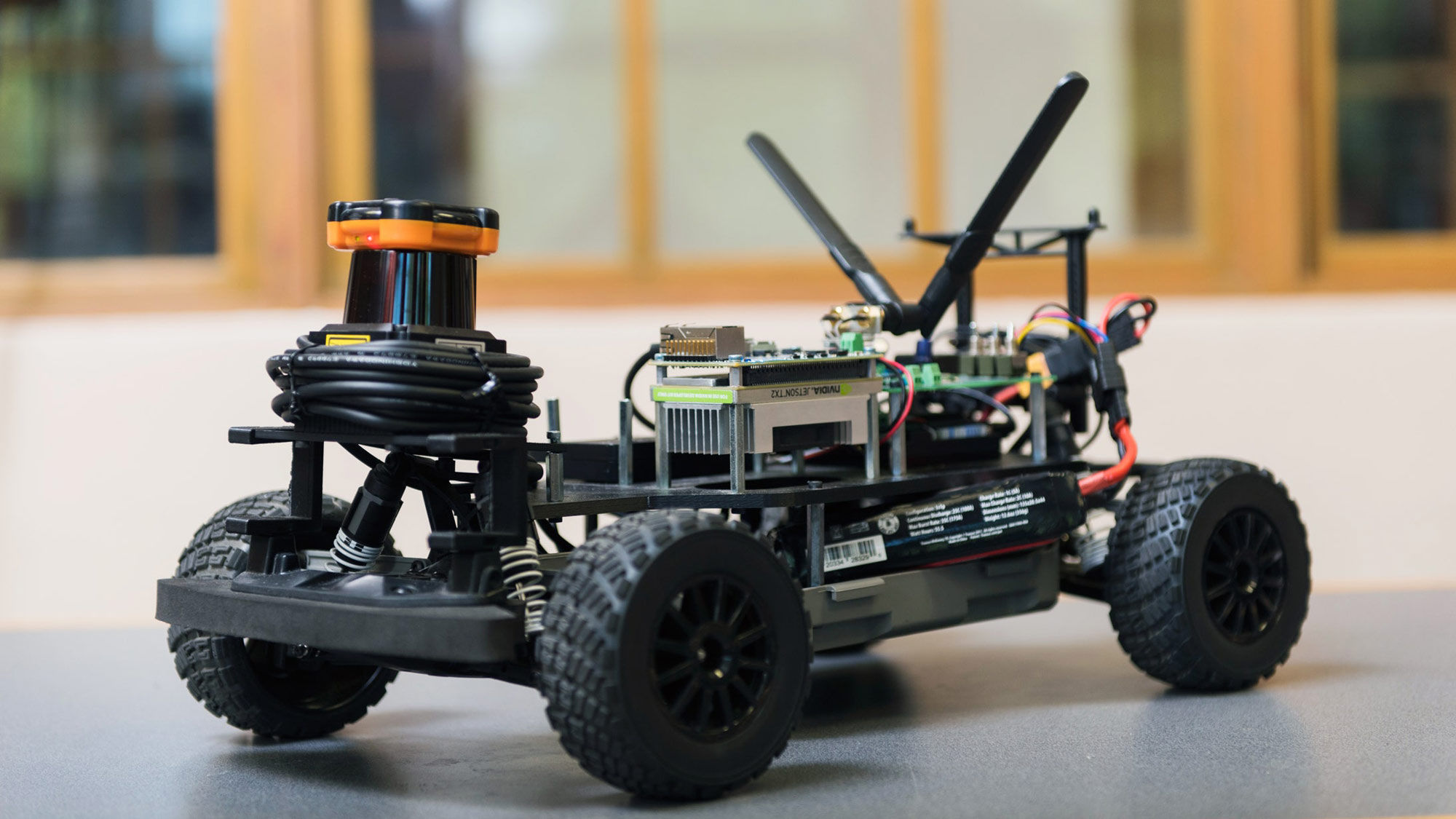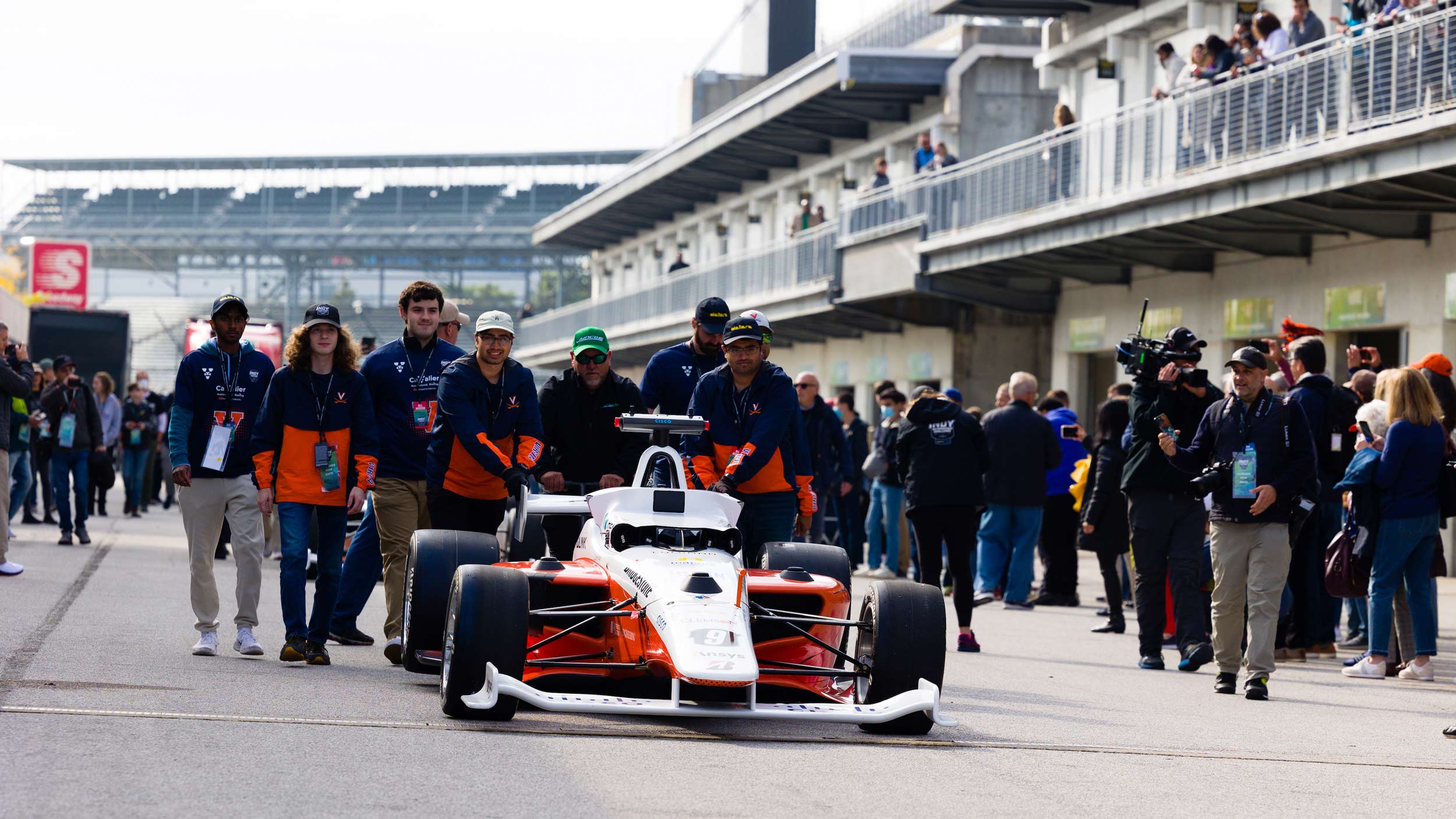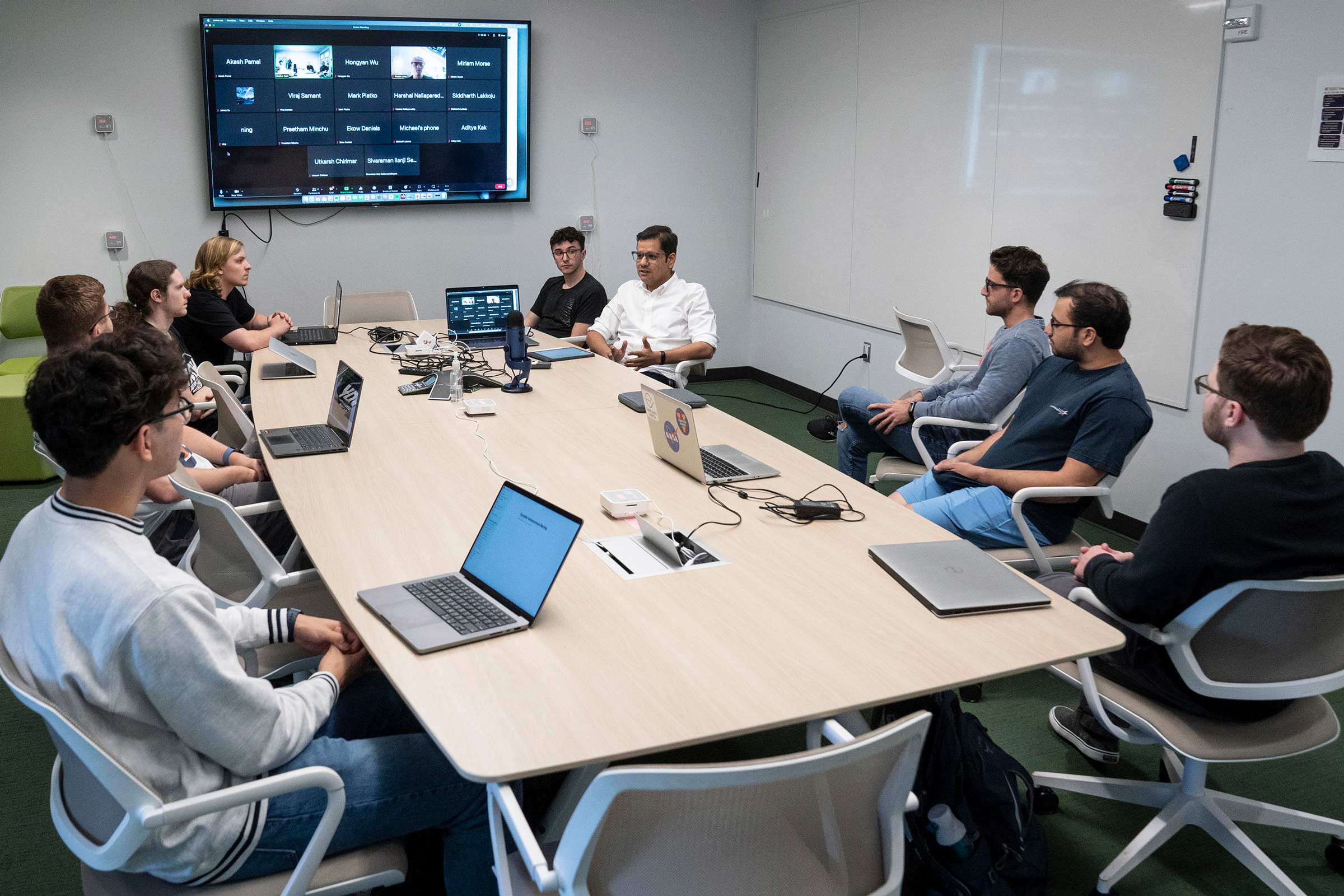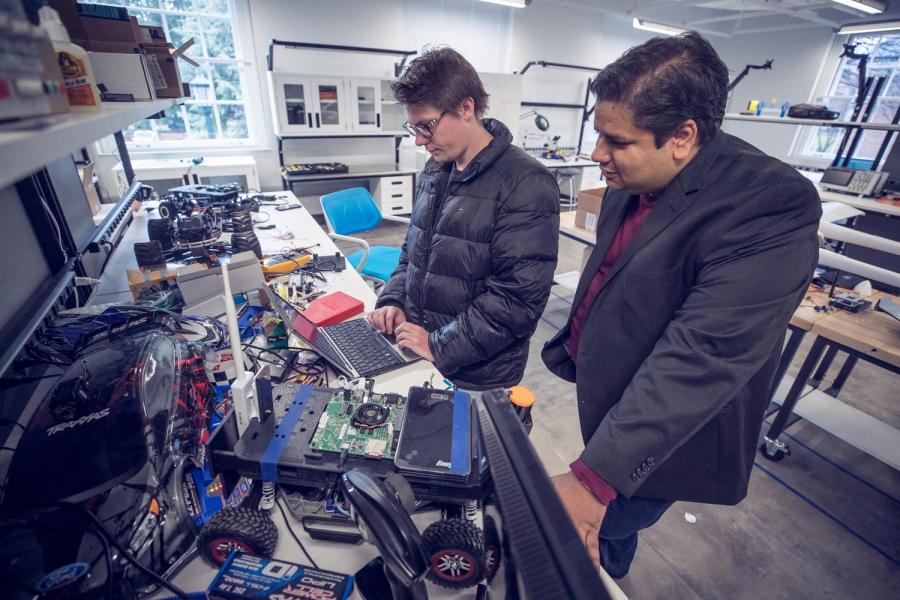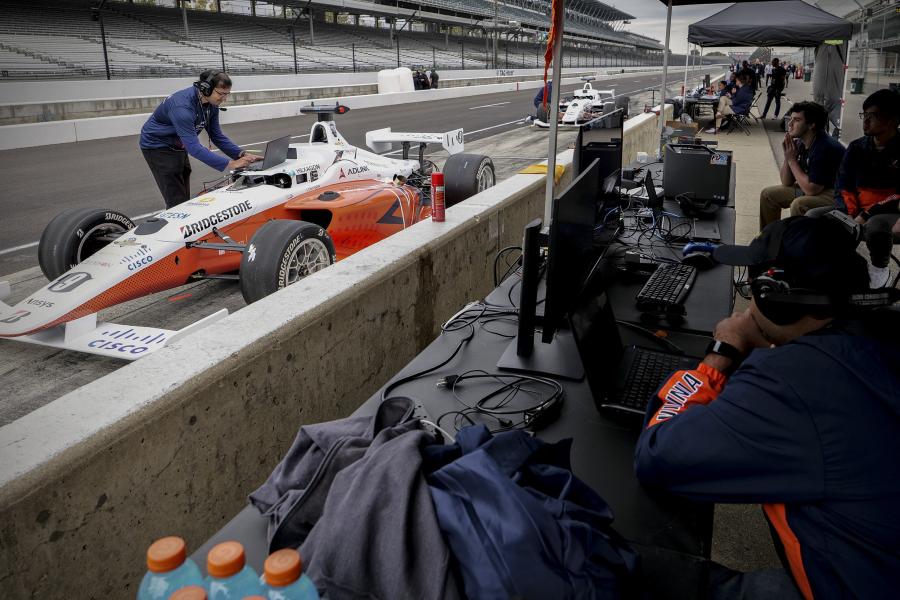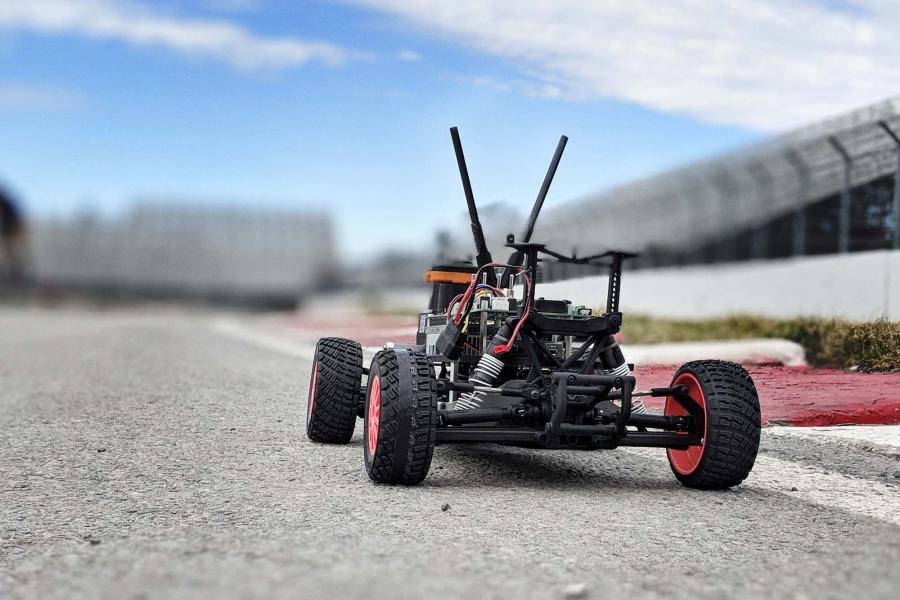The differentiating factor lies in the team-designed algorithm and autonomous racing software responsible for the car’s maneuvering.
“Nobody in that picture set out to replace human racing,” Behl said. “That’s not what motivates us. We’re embracing the complexities of integrating AI technologies and robotics to advance safe autonomous driving.”
In the runup to a competition, the UVA team obsessively tests and tweaks, tests and tweaks.
“I take my entire Cavalier crew, and we go and live at the track for a few months,” Behl said. “The track becomes our lab.”
But this year will be a little different. Yes, the team is still heading to Indiana. But they won’t race the oval track there. Instead, they’ll be refitting the Hoo-mobile to race Formula One-style in Monza, Italy.
The Formula One Fan Tinkers
Behl, a Formula One fan since his youth, would be aghast if his research somehow made butt-in-seat racing irrelevant.
“My interest in racing was purely from a spectator’s point of view,” he said. “Of course, I would categorize Formula One as the most engineering-driven sport there is.”
The son of a banker and a history teacher, Behl enjoyed a middle-class upbringing in Chandigarh, India, a city that he thinks of as relatively small, though it’s home to millions of people. He summered in the Himalayas when his father’s job moved him there seasonally. Behl’s two sisters went on to become doctors. He was the “outlier,” he said, interested in engineering.
As a student at Punjab Engineering College, Behl gravitated toward like-minded classmates. They started a robotics club. Their college was the only major engineering school that didn’t compete in his country’s prestigious “tech fest” competitions that posed annual challenges for students to solve. They sought to change that.
“We were wanting to be part of what was going on nationwide,” the professor said. “I have always built things, including a lot of robots. That was my main interest that got me into research and academia, and that’s where the seed of being competitive began.”
Behl recalled his first time traveling for a competition – two days by train to a fest at the Indian Institute of Technology Madras. As president of the club, he was his school’s lone representative, going up against about a hundred other teams, some of them “years ahead.”
The challenge was a robot that could climb a flight of stairs.
“We had this stair-climber that we built that was very bare bones,” he said. “It wasn’t like anything you’d imagine today with 3-D printed parts and polished electronics. It looked like something out of a junkyard. We had aluminum frames that we had bolted together, that we had to sometimes even weld together, to create a makeshift chassis on which the robot was designed. It had cams that allowed it to adhere to the profile of the stairs, and it climbed like a four-legged animal would.”
So how did the robot fare?
“We failed; we didn’t win anything.”
However, his team later won a competition with a robot that could kick a soccer ball.
Inventing F1/10 Racing
When Behl came to the U.S. to earn his master’s and doctorate in engineering at the University of Pennsylvania, neither robots nor racing were Behl’s official focus. Rather, his dissertation was on how to accurately predict and manage energy consumption at large scale – in a building, on a campus, even throughout a whole city.
He and his adviser, Rahul Mangharam, converted Behl’s algorithm into dashboard-style software that could recommend adjustments, taking into consideration the fluctuating cost of commercial electricity.
“We developed a tool that is used in many, many buildings today,” Behl said.
But as his more hands-on work wrapped up in 2015, the future UVA faculty member realized he still had some bliss he needed to follow. A master’s student in the lab where he worked, Paril Jain, shared his obsession with racing and automation. They challenged themselves to convert a 1/10 scale radio-controlled car into an autonomous vehicle.
They chose that particular-sized RC car for speed. “It’s very fast,” the professor said, motioning to one of the simple black racers with thick wheels. “It can go, like, 40 mph, and it’s impossible to catch if you run behind it.”
The pair spent several weekends adapting the car. Installing the software for the LIDAR system, which uses a laser to estimate the distance of objects, then integrating that software with the car’s controls, took up most of their time.
“So he helped me prototype this, and our ambition was just to amuse ourselves,” Behl said.
“I wanted to see if it could be done.”
Behl called the car type “F1/10,” a name combining the size of the car and his interest in Formula One. They ran the car around the lab and in the halls and corridors. And they posted information online as a guide for others.
“Within a year, it blew up, we got so much interest from our peer institutions,” he said. “I didn’t have the foresight to see this is where it was going to end up, but there was interest to use this as an educational tool for robotics for autonomous vehicles – to train a workforce.”
In retrospect, it might have been obvious. Accidentally crashing a cheaper, 1/10-size vehicle is way better than crashing a full-sized car.
The downsizing also allowed the cars to be subjected to indoor controlled experiments. Behl himself has 16 of the little cars in his lab in Rice Hall.
Hitting the Road for Research
With the growing interest in F1/10, Behl and colleagues gave tutorials at top academic conferences in robotics and cyber-physical systems, teaching others how to build their own F1/10 platform.
“Now people started saying, ‘I’m building three at my university. Next year, why don’t we come and we’ll have an autonomous race?’” he said.
“It’s truly mind-boggling. I think there’s something like 75 universities all over the world now that have used the car either for teaching or for research, or for both, or have come and competed in our official races. That’s thousands of people across several dozen really good universities all over the world.”
Those smart people are all collecting data through trial and error. They’re sharing what they find in research papers or in other, sometimes cooler ways – including making their original code available to others online.
Code, Behl said, is “where the thinking happens, and I often describe it as a recipe. Your ingredients are data from a LIDAR sensor, camera sensor, how far the wheels are turning and how fast the car is going. And so these are ingredients, you have to mix them, turn them and make sense of them, so that you can steer the car.”
He added, “Driving is really only two signals: how fast you move and how you steer.”
After formalizing the racing, Jain went on to work for Tesla’s Autopilot project, while Behl continued on the academic track. He joined the UVA faculty in 2017. Right away, he made F1/10 available to Virginia students through a for-credit course and club involvement.
So when the organizers of the Indy Autonomous Challenge began planning for their full-scale car competition, which would include university entrants, they naturally asked Behl for his advice.
He told them he would consult, but what he really wanted to do was race.
A Solid Track Record, Then a Crash
In the past several years, UVA teams have competed twice at Las Vegas Motor Speedway, once at Texas Motor Speedway and in the initial race at Indianapolis Motor Speedway.
